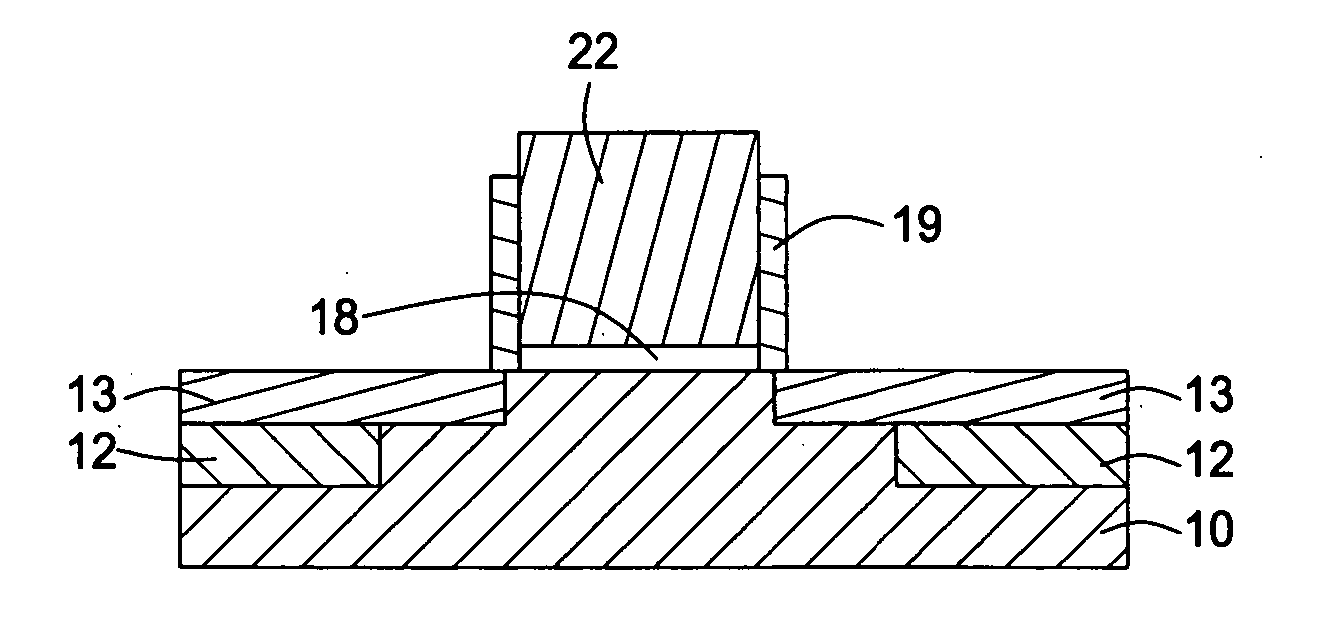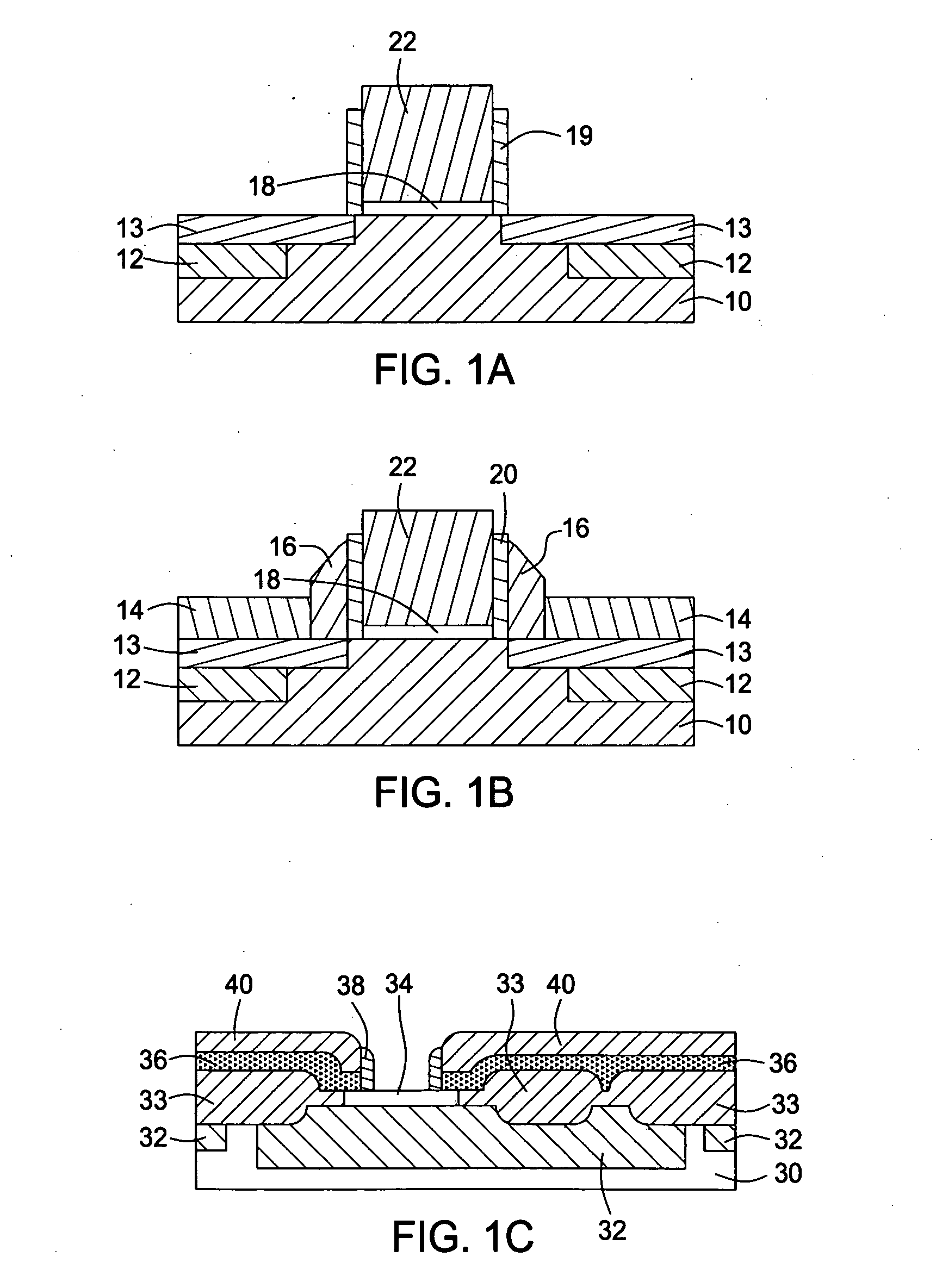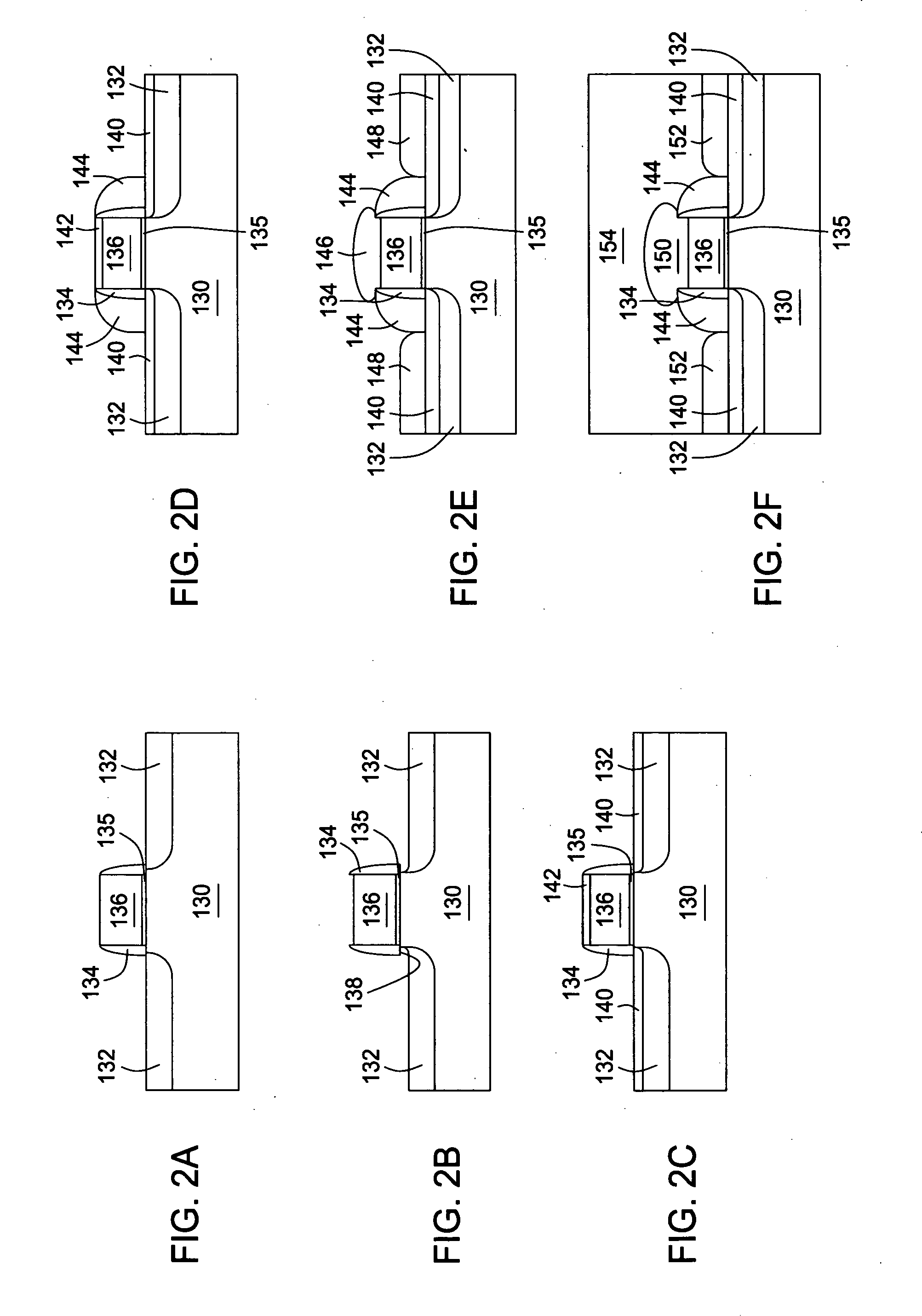Methods to fabricate MOSFET devices using selective deposition process
a selective deposition and mosfet technology, applied in the direction of semiconductor devices, chemical vapor deposition coatings, coatings, etc., can solve the problems of increasing series resistance, increasing series resistance, and challenging production of ultra shallow source/drain junctions
- Summary
- Abstract
- Description
- Claims
- Application Information
AI Technical Summary
Benefits of technology
Problems solved by technology
Method used
Image
Examples
examples
[0071] Example 1 SiGe / Si stack: A substrate, Si, (e.g., 300 mm OD) was employed to investigate selective, monocrystalline film growth by CVD. A dielectric feature existed on the surface of the wafer. The wafer was prepared by subjecting to a 1% HF dip for 45 seconds. The wafer was loaded into the deposition chamber (Epi Centura® chamber) and baked in a hydrogen atmosphere at 800° C. for 60 seconds to remove native oxide. A flow of carrier gas, hydrogen, was directed towards the substrate and the source compounds were added to the carrier flow. Dichlorosilane (100 sccm) and germane (1% GeH4 in H2, 280 sccm) were added to the chamber at 3 Torr and 725° C. Also, hydrogen chloride (190 sccm) and diborane (1% in H2, 150 sccm) were delivered to the chamber. The substrate was maintained at 0.725° C. Deposition was conducted for about 5 minutes to form a 500 Å SiGe film with a germanium concentration of about 20 at % and the boron concentration of about 1.0×1020 cm3. The substrate was remov...
PUM
| Property | Measurement | Unit |
|---|---|---|
| pressure | aaaaa | aaaaa |
| temperature | aaaaa | aaaaa |
| temperature | aaaaa | aaaaa |
Abstract
Description
Claims
Application Information
 Login to View More
Login to View More - R&D
- Intellectual Property
- Life Sciences
- Materials
- Tech Scout
- Unparalleled Data Quality
- Higher Quality Content
- 60% Fewer Hallucinations
Browse by: Latest US Patents, China's latest patents, Technical Efficacy Thesaurus, Application Domain, Technology Topic, Popular Technical Reports.
© 2025 PatSnap. All rights reserved.Legal|Privacy policy|Modern Slavery Act Transparency Statement|Sitemap|About US| Contact US: help@patsnap.com



